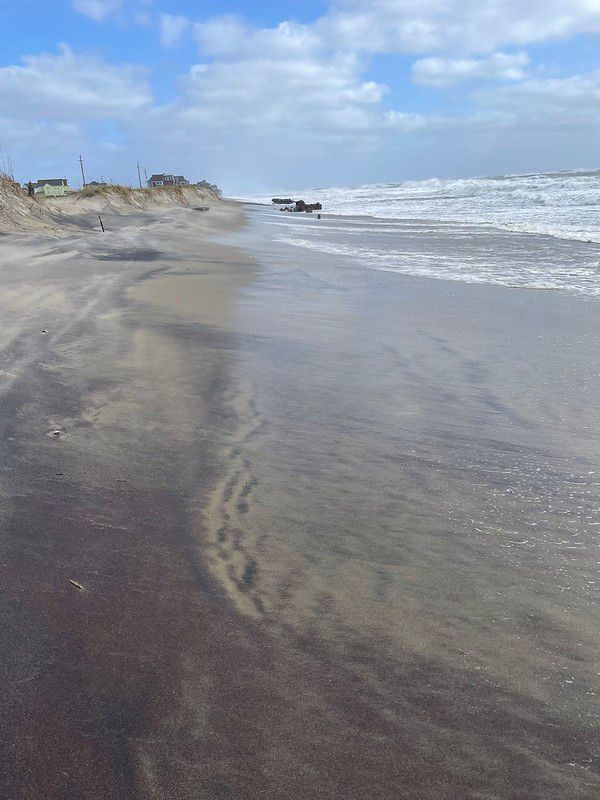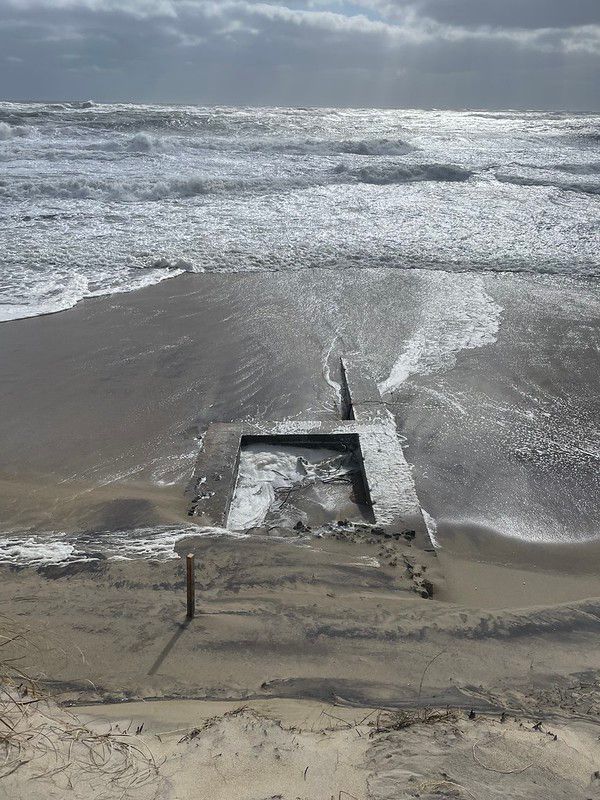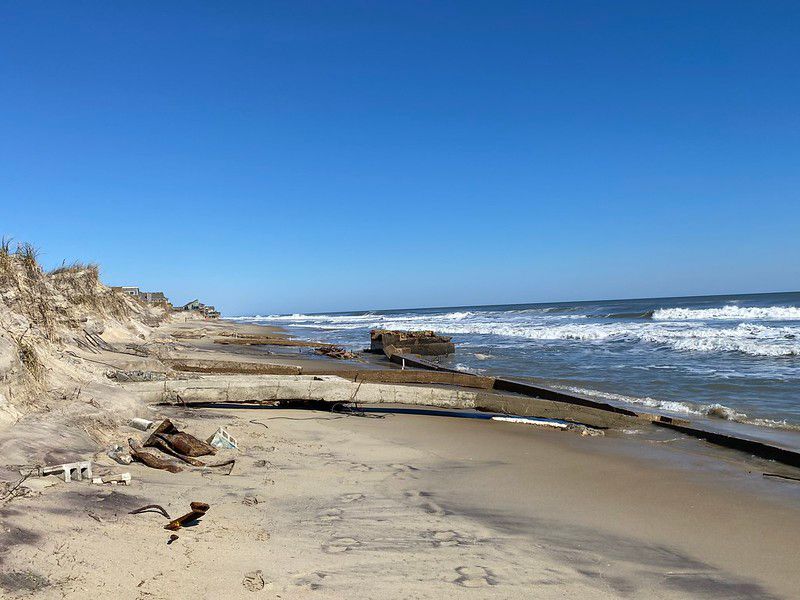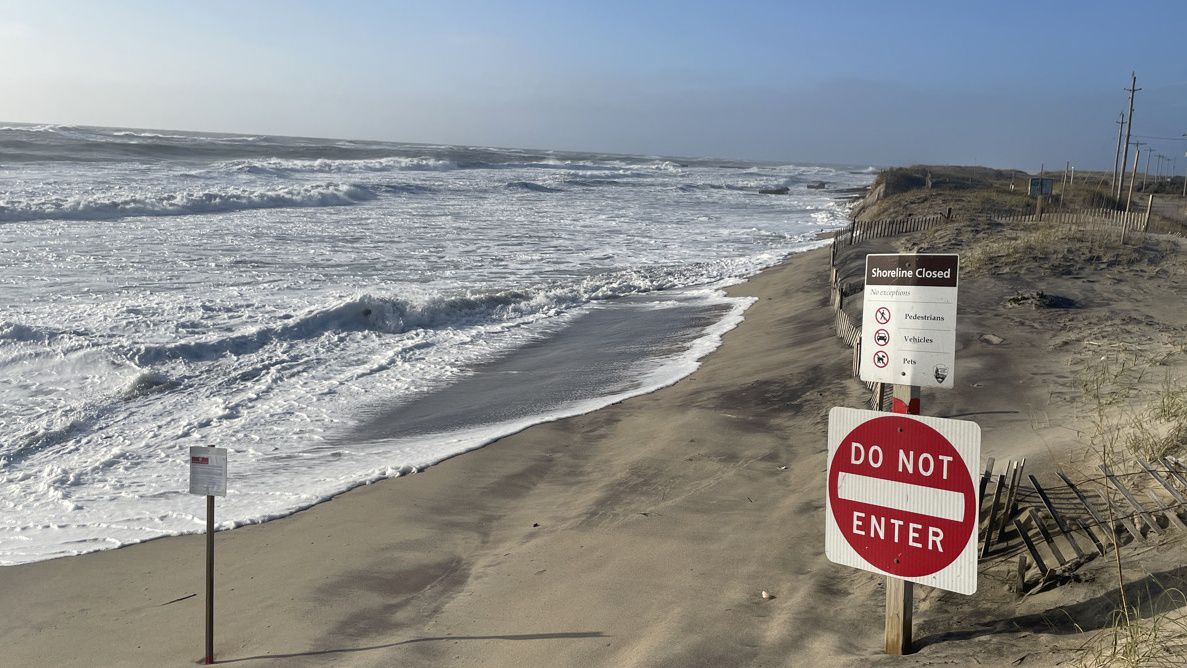On Cape Hatteras, about as far out as people can get on North Carolina's Outer Banks, the beach around a former military installation is now closed after erosion exposed petroleum contamination dating back decades.
The closed section of Buxton Beach is being expanded after the Dare County Department of Health & Human Services issued a public health advisory on Monday.
What You Need To Know
- Health officials expanded the closed section of Buxton Beach and issued a public health advisory on Monday
- This comes after more petroleum-contaminated soil was exposed by erosion
- A section of the beach has been closed since September 2023 due to contamination and abandoned military infrastructure
- Buxton Beach was the home of a Navy and Coast Guard base for more than 30 years
The advisory expands the closed section of the beach from Old Lighthouse Road to the first jetty, an area that includes the Buxton Beach access at the end of Old Lighthouse Road.
The health advisory is due to petroleum-contaminated soils that were likely exposed by beach erosion. The area is the former site of Naval Facility Cape Hatteras and Coast Guard Group Cape Hatteras in Buxton.
Public health officials say there are also remnants of what is believed to be Navy and Coast Guard infrastructure that could pose a danger to swimmers and surfers. Because of the remnants and the petroleum-contaminated soils, officials recommend avoiding swimming, wading or fishing in the affected area.
Dare County DHHS also recommends having any private drinking wells in or near the area tested to ensure it does not contained contaminants.
Past petroleum issues
The most recent health advisory comes after National Seashore staff noticed petroleum odors and sheen on the water at Buxton Beach near the site that used to host a Navy and Coast Guard base.
Approximately two-tenths of a mile of the beach were already closed in September 2023. After Tropical Storm Idalia and Hurricane Lee brushed the coast, infrastructure from the old military bases was exposed, and visitors reported a strong smell of petroleum.
Part of the beach was closed, and testing by the Coast Guard later found the soil contained petroleum hydrocarbons, which are toxic if ingested or inhaled. After the tests, Dare County DHHS issued a precautionary public health advisory, and the beach has remained closed.

Petroleum-contaminated soil has been seen on the beach intermittently since September 2023. In February, staff at the Cape Hatteras National Seashore noticed a strong smell of petroleum and several surfers reported hair that smelled like fuel and saw a sheen on the water near Buxton Beach Access.
Torpedo Junction
The newly unearthed contaminated soil is in one of the largest American ship graveyards of World War II.
In 1942, just as the U.S. was entering WWII, German U-boats wreaked havoc on merchant ships just off the Outer Banks. In the beginning of the war, there were nearly no restrictions on merchant ships off the American coast. In Cape Hatteras, ships sailed past in straight lines, with all their running lights ablaze.
Restrictions on the shore were also non-existent. There were no blackouts, and light from the shore made passing ships an easy target. Lighthouses across the coast continued to light up the night sky.
With a lack of restrictions, and nearly no protection to speak of, merchant ships were easy targets for German U-boats. Between January and June 1942, 397 ships were sunk in American-protected waters.
An important navigational point, and close to Wilmington, a shipbuilding powerhouse that would produce 243 ships during the war, Cape Hatteras saw so many ships sink off its coast that it earned the nickname “Torpedo Junction.”
By the end of 1942, the U.S. Navy realized its mistake, and more protections for merchant ships were put into place. While carnage like that of early 1942 would not be seen again in North Carolina waters, more than 80 ships already rested on the ocean floor along North Carolina’s coast.
Military bases at Buxton Beach
Eleven years after the end of WWII, the Navy moved into Cape Hatteras, establishing a nearly 50-acre base just north of the Cape Hatteras Lighthouse at Buxton Beach. When establishing the base, the Navy agreed to clean up and restore the site when it stopped using the base.
In 1982, the Navy moved out, but the base’s infrastructure remained. Two years later, the Coast Guard moved in, making an agreement with Cape Hatteras National Seashore that it would restore the land to park after it left.
In 2005, after storms damaged facilities at the base, the Coast Guard announced it would be decommissioned. The removal of base infrastructure and housing was completed in 2012.

During that process, engineers found several contaminants, including semi-volatile organic compounds (SVOC), metals, pesticides and polychlorinated biphenyls (PCB) compounds in soil around the wastewater facilities. Some wastewater facilities were destroyed.
In 1998, the Army Corps of Engineers deemed the Buxton Beach Access a Formerly Used Defense Site (FUDS) site after finding petroleum contamination in several areas. In 2004, it removed over 4,000 tons of contaminated soil. Despite this, contamination was still found in some areas of Buxton Beach, which are still monitored annually.
Old problems, new questions
Sunken ships and decades of use as a military base during the Cold War has left Buxton Beach with abandoned infrastructure, polluted soil and the smell of petroleum. All of this has led to the closure of three-tenths of a mile of beach, and the problem only worsens as the beach continues to erode after every storm, exposing more abandoned remnants and contaminated soil.
Some of the petroleum could be a legacy of WWII. A 2013 report from the National Oceanic and Atmospheric Administration found 36 potentially polluting submerged wrecks in U.S. waters that could leak oil, endangering coastal resources.

Many of those ships are off the coast of the Outer Banks. In 2014, the NOAA found that a ship sunk by a German U-boat in 1942 was the source of an oil leak approximately 48 miles from Cape Lookout, N.C. The wreck had been identified in the 2013 report.
Some of the contamination is from the old military bases. When Buxton Beach Access was included in the FUDS program in 1999, part of the work was targeted toward petroleum contamination from known spills and storage areas.
Regardless of where the contamination is coming from, there is still the question of how to clean it up. In Monday’s press release, the Cape Hatteras National Seashore says it will be meeting with the Coast Guard and Army Corps of Engineers in the coming days.
The corps is continuing with FUDS protocols, trying to address the petroleum contamination and the leftover infrastructure. The Coast Guard is conducting a separate investigation to identify non-petroleum contaminants.
All the while, Cape Hatteras National Seashore says the beach will remain closed.



